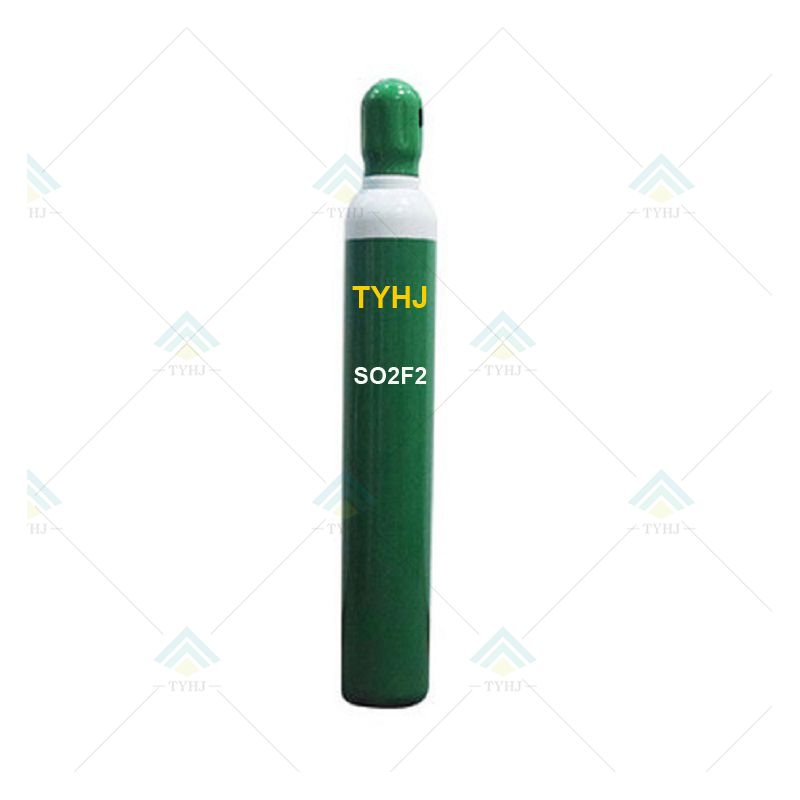SO2F2 Industrial Gas, also known as sulfuryl fluoride, is a widely used fumigant and specialty industrial gas. While it offers high efficiency for pest control, sterilization, and chemical processes, it is highly toxic and requires strict safety measures during storage, handling, and application. For industrial users, understanding safe handling practices is not only a regulatory requirement but also a critical factor in protecting personnel, equipment, and the environment.

To handle SO2F2 safely, industrial personnel must first understand its chemical characteristics:
Toxicity: SO2F2 is highly toxic if inhaled, requiring proper ventilation and personal protective equipment (PPE).
Non-Flammable: It does not ignite easily, but can react with certain materials under high temperatures.
Corrosive Potential: Contact with moisture or certain metals may lead to corrosion or formation of acids.
Global Warming Potential (GWP): As a potent greenhouse gas, uncontrolled release can have environmental impacts.
By understanding these properties, users can anticipate potential hazards and implement safety protocols tailored to their industrial environment.
1. Personal Protective Equipment (PPE)
Workers handling SO2F2 must wear proper PPE to minimize exposure:
Chemical-resistant gloves and suits
Respiratory protection, preferably supplied-air or cartridge respirators
Safety goggles or face shields
Training employees to properly wear, inspect, and maintain PPE is essential for preventing accidental exposure.
2. Proper Storage
Industrial storage guidelines for SO2F2 include:
Cylinders must be kept in a cool, ventilated area, away from direct sunlight or heat sources.
Use corrosion-resistant racks to avoid cylinder damage.
Segregate from incompatible chemicals to prevent reactions.
Proper labeling and signage are also required for compliance with OSHA and international transport regulations.
3. Handling Procedures
Safe handling includes:
Using cylinder trolleys for transport instead of manual lifting.
Always checking valves, connections, and seals before operation.
Using leak detection devices to monitor for accidental releases.
Ensuring that all handling occurs in areas with adequate ventilation or fume extraction systems.
These measures protect workers and reduce the risk of accidental release.
Despite preventive measures, accidents may occur. Industrial facilities should have clear protocols:
Spill or leak response: Evacuate personnel, ventilate the area, and follow a pre-defined containment procedure.
First aid measures: In case of inhalation, move the exposed person to fresh air immediately and seek medical attention. For skin or eye contact, rinse thoroughly with water and consult medical personnel.
Training and drills: Regular emergency drills ensure staff are prepared to respond efficiently to incidents.
Emergency preparedness minimizes downtime, reduces liability, and safeguards employee health.
Handling SO2F2 safely requires adherence to multiple regulations:
OSHA standards: Establish safe exposure limits and mandatory training programs.
EPA regulations: Include fumigation protocols and emission reporting requirements.
Transport compliance: Follow DOT, IATA, and ADR guidelines for safe transport and storage of toxic gases.
Choosing suppliers who provide proper documentation and safety data sheets (SDS) ensures compliance and reduces legal risks.
Industrial procurement teams and process engineers often seek practical guidance:
Select certified suppliers that provide high-quality gas and safety documentation.
Invest in monitoring systems for leak detection and concentration control.
Implement a closed-loop system to reduce environmental emissions.
Train all personnel on handling, emergency procedures, and PPE use.
Schedule regular audits to verify storage, handling, and regulatory compliance.
These practices not only protect workers but also enhance operational efficiency and reduce long-term costs.
SO2F2 Industrial Gas is widely applied in:
Fumigation of storage facilities and grains: Protects stored products but requires careful gas monitoring.
Quarantine facilities: Ensures sterilization without compromising worker safety.
Specialty chemical processes: Acts as a fluorinating or sterilizing agent, where controlled handling is critical to maintain product quality.
For all these applications, the combination of PPE, ventilation, monitoring, and trained personnel is essential for safe use.
SO2F2 Industrial Gas is a powerful industrial tool, but its safe handling is non-negotiable. By understanding its properties, following best practices for storage, transport, and handling, preparing for emergencies, and complying with regulations, industrial users can maximize efficiency while minimizing risk.
For procurement managers, engineers, and safety officers, partnering with knowledgeable suppliers and implementing comprehensive safety protocols ensures that SO2F2 can be used effectively and responsibly across industrial settings.